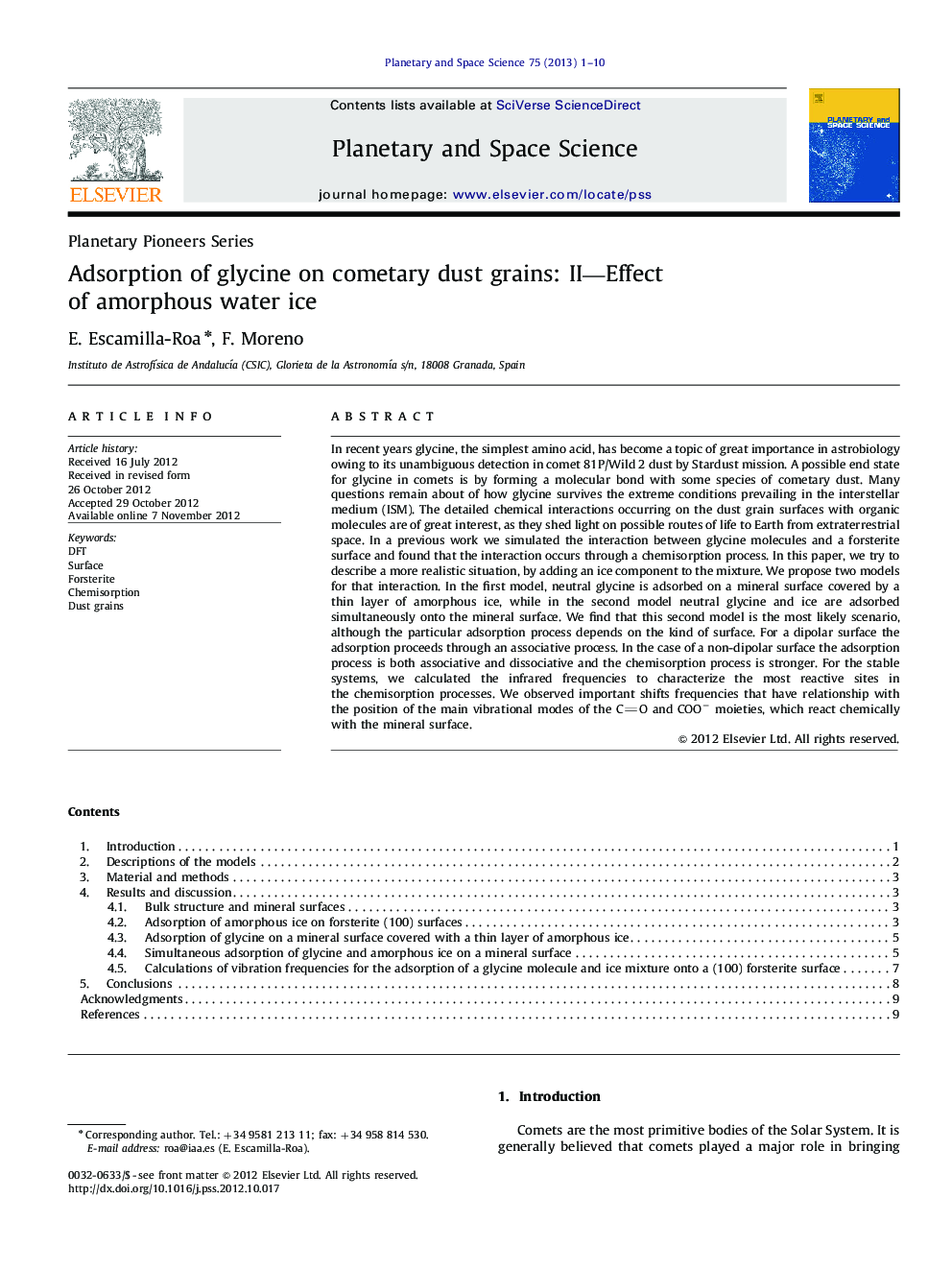| Article ID | Journal | Published Year | Pages | File Type |
|---|---|---|---|---|
| 1781339 | Planetary and Space Science | 2013 | 10 Pages |
In recent years glycine, the simplest amino acid, has become a topic of great importance in astrobiology owing to its unambiguous detection in comet 81P/Wild 2 dust by Stardust mission. A possible end state for glycine in comets is by forming a molecular bond with some species of cometary dust. Many questions remain about of how glycine survives the extreme conditions prevailing in the interstellar medium (ISM). The detailed chemical interactions occurring on the dust grain surfaces with organic molecules are of great interest, as they shed light on possible routes of life to Earth from extraterrestrial space. In a previous work we simulated the interaction between glycine molecules and a forsterite surface and found that the interaction occurs through a chemisorption process. In this paper, we try to describe a more realistic situation, by adding an ice component to the mixture. We propose two models for that interaction. In the first model, neutral glycine is adsorbed on a mineral surface covered by a thin layer of amorphous ice, while in the second model neutral glycine and ice are adsorbed simultaneously onto the mineral surface. We find that this second model is the most likely scenario, although the particular adsorption process depends on the kind of surface. For a dipolar surface the adsorption proceeds through an associative process. In the case of a non-dipolar surface the adsorption process is both associative and dissociative and the chemisorption process is stronger. For the stable systems, we calculated the infrared frequencies to characterize the most reactive sites in the chemisorption processes. We observed important shifts frequencies that have relationship with the position of the main vibrational modes of the CO and COO− moieties, which react chemically with the mineral surface.
